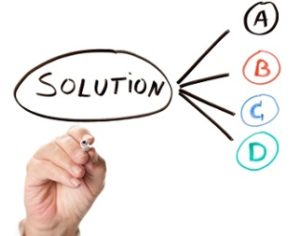At cloudERP, we generally advocate for transforming ERP Systems and other organizational data into Star Schema Data Marts, and using those data marts as the input to Business Intelligence (BI) software suites. There are other valid approaches such as using the live ERP Software data (or a copy of it) as input to the BI tool (lower cost), or developing an Enterprise Data Warehouse (higher cost) to source the BI tool. We have found over the years that well-designed Data Marts do a very good job of meeting the needs of manufacturers at a more reasonable cost than the EDW approach, and supporting organizational Change better than the direct connection of the BI tool to the ERP data.
In the last several months, our Business Intelligence Group has had a number of requests from our clients to map additional ERP systems into their Data Marts. In most cases, our client acquired a competitor running a different ERP system. This usually means that the acquired entity will be moving to our client’s “standard” ERP Software in the very near future.
But this transition often takes months to accomplish, and our clients generally rely heavily on up-to-date information from their BI systems, and don’t want to wait until the transition is complete to have the new entity’s data incorporated into their BI dashboards and reports. By mapping the new ERP System data into the Data Mart, this can be achieved very quickly, and with few or no changes to the BI reports.
Here are a few real-world examples of this type of Change. A company recently selected a new ERP System as their standard, so they are working on the 7th ERP system mapping. This may be an extreme example of Change, but acquisitions are increasingly common in the current business cycle. Another type of Change that is perhaps more common with our clients is a “simple” ERP System replacement. This can happen at any time in an organization’s BI lifecycle. We often implement Data Marts at the beginning of the lifecycle with mappings from legacy ERP systems that are planned for replacement, and then map in the new ERP Software while it is being implemented.
The take-away from this is that sooner or later, significant Change is coming to most BI systems. In the above examples, new ERP systems imposed a Change on the BI environment. The Business itself also provides a steady stream of Changes; new lines of business, changes in the competitive landscape, supplemental ERP systems or other external data to be merged, new (or deeper) KPIs, the inevitable “I want that for my department too” requests. The list is seemingly endless.
For some small businesses, going with the ERP vendor’s “out-of-the-box” BI solution is a viable choice for a quick BI “win,” but depending on the solution’s architecture, it may be difficult to incorporate significant Change (like a supplemental ERP system or an additional ERP Software). As mentioned at the top of this post, another quick win can be achieved by buying a BI software suite, and pointing it at the ERP System’s native data. But BI systems constructed in this manner usually fall over when trying to integrate an additional ERP Software, or when switching to a new ERP System altogether.
Having a solid BI strategy and extensible BI system components in place helps organizations embrace Change quickly and cost-effectively, without forgetting the past (transactions in the “old” ERP Software), and without disrupting the stream of business insight they gain from their BI system.




















+ There are no comments
Add yours